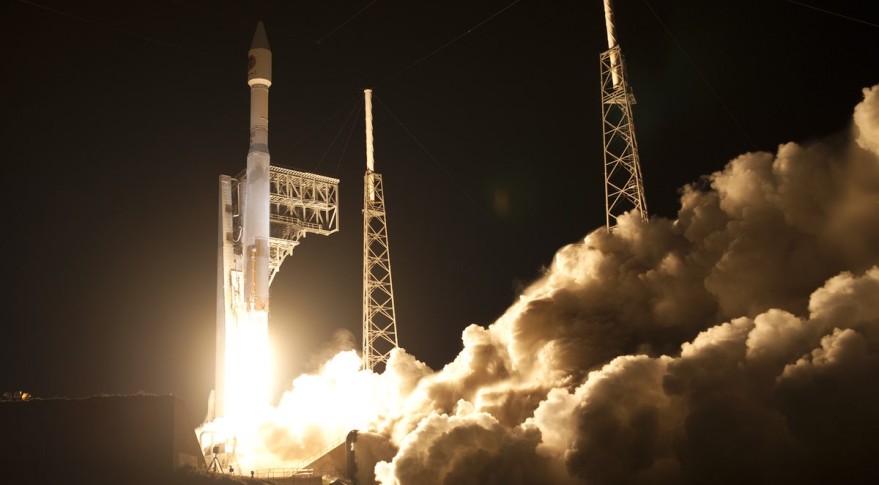United Launch Alliance Confirms Engine Issue on Latest Atlas Rocket Launch

WASHINGTON — The upper stage of the Atlas V that launched a Cygnus cargo spacecraft March 22 fired for more than a minute longer than planned, apparently to compensate for the premature shut down of the rocket's first stage engine.
United Launch Alliance confirmed March 24 that the Centaur upper stage used on the launch of the Cygnus OA-6 mission burned for longer than scheduled, although the company did not provide a reason for the extended engine firing.
"The Centaur burned for longer than planned," ULA spokeswoman Lyn Chassagne said in a statement provided to SpaceNews. "The team is evaluating the occurrence as part of the standard post-flight data analysis." She later said that burn lasted about 60 seconds longer than planned. [See Launch Photos ffor Orbital ATK's Cygnus OA-6 Mission]
While United Launch Alliance declared the Atlas 5 launch from Cape Canaveral a success, placing the Cygnus in its planned orbit, industry sources and broadcast telemetry suggest that success required an extended burn by the Atlas' Centaur upper stage.
According to a mission summary released by ULA in advance of the launch, the Centaur was scheduled to shut down its RL10 engine 18 minutes and 9 seconds into the mission. However, telemetry of the launch, shown on NASA Television, showed that the engine continued to fire beyond that time, shutting down about 19 minutes and 20 seconds into the mission.
That extended burn appeared to catch launch commentators off-guard, who had advised on more than one occasion that engine shutdown was expected at the planned time. There was no public commentary about the extended burn during the live broadcast beyond a statement that the Centaur continued to "perform very well."
At a post-launch press conference at NASA's Kennedy Space Center early March 23, Vern Thorp, ULA's program manager for NASA missions, suggested that the additional burn was a routine discrepancy from original projections for the burn.
Breaking space news, the latest updates on rocket launches, skywatching events and more!
"The pre-launch predictions of exactly when the events are going to occur are based on a preliminary trajectory. Typically it's been developed a few weeks before the launch," he said. "It's not unusual for things to vary a little bit based on the actual conditions of the launch."
But in addition to the extended burn of the Centaur, launch telemetry broadcast on NASA TV indicates that the RD-180 engine in the first stage of the Atlas V shut down prematurely. That telemetry shows booster engine cutoff taking place about 4 minutes and 10 seconds into the mission, about five seconds before the scheduled cutoff time according to the ULA mission summary.
Chassagne confirmed that the first stage burn was six seconds shorter than planned, but did not provide any details about what may have caused the stage to shut down early. Industry sources suggest that the Centaur burn may have extended to make up for any underperformance by the first stage, such as a premature shutdown.
That extended Centaur burn to put the Cygnus spacecraft into the proper orbit contributed to an early shut down of a later burn, after spacecraft separation, to deorbit the stage. Chassagne said that burn ended eight seconds early, causing any debris that survived reentry to splash down in "an uninhabited area of ocean east of the planned landing location" in the ocean south of Australia.
ULA noted that, despite the irregularities, it still considered the launch a success. "The Atlas V's robust system design, software and vehicle margins enabled the successful outcome for this mission," Chassagne said.
"Centaur nailed the orbit," Thorp said at the press conference, noting that the orbit the Centaur placed the Cygnus in was within a "fraction of a kilometer" of the planned orbit. "We got Cygnus where it wants to go."
"Like every mission, we're going to go do a very detailed post-flight review," he added, "to make sure everything performed properly. But from everything we've seen so far, the mission was pretty nominal."
This story was provided by SpaceNews, dedicated to covering all aspects of the space industry.

Jeff Foust is a Senior Staff Writer at SpaceNews, a space industry news magazine and website, where he writes about space policy, commercial spaceflight and other aerospace industry topics. Jeff has a Ph.D. in planetary sciences from the Massachusetts Institute of Technology and earned a bachelor's degree in geophysics and planetary science from the California Institute of Technology. You can see Jeff's latest projects by following him on Twitter.


